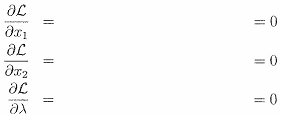Population problem: Theory and evidence
1. Formally frame one issue/concept raised in the Dasgupta article in the terms of theoretical microeconomics. Do not try to solve the problem. Simply try to structure the optimization decision.
Questions to address:
• - What is the choice being made?
- Who is making the decision?
- What is being maximized (minimized)?
- What tradeoffs do we expect are involved in the decision?
- What are the outcomes for the decision-maker? For the group and region?
2. Predict the change in behavior resulting from the following events:
• - Innovations in "micro-lending" cause an increase in the wages of women (both in absolute terms and relative to the wages of men).
- Improvements in health care increase the probability of child survival.
- Improvements in the social security system relieve children of the burden of financially supporting their parents in old age.
Use (1) your model, words, and a graph (or some combination);(2) basic principles of consumer theory; and (3) information from the Dasgupta reading.
Interesting issues
Many countries impose interest rate ceilings on their commercial banks. The World Bank has long argued that this policy in developing countries reduces the incentives for individuals to save and thus depresses aggregate savings. Please evaluate this argument as follows.
Suppose that a country is populated by many identical consumers, each of whom lives in two periods. In the first period of a consumer's life, she or he earns a wage income M, some of which is saved for retirement. Second-period (retirement) wages earnings are zero. The typical consumer's preferences are represented by a utility function
U = U(x1,x2)
where X1 is consumption in period 1, and X2 is consumption in period 2. Savings (income not consumed in the first period) earn interest at rate r . This is the "real rate of interest"; you may ignore inflation. (Note that the units here are real dollars of consumption.)
a) Draw a diagram with X1 and X2 on the axes, showing the budget set, the indifference curves and the optimal consumption choices. Identify savings in the diagram.
b) Show what happens to the consumption point and savings when r is increased. (Hint: second period consumption, X2, will equal period 1 savings plus interest, or (M- x1)(1 + r).

Now assume that the utility function has the particular form where we interpret 0 as the rate of time discount (i.e., the rate at which second-period utility is "discounted" when compared to first-period utility), and the log operator is the natural log.
c) Fill in the blanks below to calculate an expression for optimal savings as a function of income, the discount rate and the interest rate.

First order conditions for a maximum

d) Simulaneously solve to arrive at equations for x*1 and x*2.
e) How do savings respond to changes in the interest rate? How does consumer theory explain this result? (Hint: The response will involve discussion of the income and substitution effects.)